Eight University of Nebraska–Lincoln alumni received the Department of Agronomy and Horticulture Alumni Lifetime Achievement Award November 21 at the Emeriti Banquet. The banquet is hosted by the department’s undergraduate student organizations.
Award recipients include George W. Beadle, William Wesley Burr, Steve A. Eberhart, Kimberly Erusha, Franklin D. Keim, A. Bruce Maunder, Monica Norby and Robert A. Olson.
This award is the highest honor bestowed upon graduates of the Department of Agronomy and Horticulture who have made significant contributions to their community, state and nation through professional service, public service and/or civic engagement. The award was founded in 2016 to recognize alumni who have enhanced the reputation of the department and the university by distinguishing themselves in their careers. Honorees are selected by the Agronomy and Horticulture Alumni Advisory Council (AHAAC).

GEORGE W. BEADLE
October 22, 1903–June 9, 1989
George W. Beadle, a geneticist who won a Nobel Prize in Physiology or Medicine in 1958, received his Bachelor of Science degree in 1926 and a Master of Science degree in 1927 from the University of Nebraska– Lincoln. His interest in genetics began while he was a student at Nebraska.
Beadle’s Nobel Prize was awarded for his work in demonstrating how genes control the chemistry of the living cell, one of the basic concepts of modern genetics. The discovery revolutionized the understanding of genetics. He shared the prize with Edward L. Tatum, professor of biochemistry with the Rockefeller Institute, and Joshua Lederberg, professor of genetics at the University of Wisconsin. Beadle grew up on a farm near Wahoo, Nebraska, and attended Wahoo High School. A high school teacher persuaded him to attend Nebraska’s College of Agriculture in 1922. At Nebraska, he studied hybrid wheat with agronomy professor Franklin D. Keim.
Through Keim he secured a teaching assistantship at Cornell University where he worked on Mendelian asynopsis in Zea mays. He completed his Ph.D. in 1931. He was awarded a National Research Council Fellowship at the California Institute of Technology at Pasadena in 1931.
While at Caltech, he continued his work on corn and began work on crossing-over in the fruit fly, Drosophila melanogaster, until he left in 1936. In 1936, he became an assistant professor of genetics at Harvard University. He was appointed professor of biology in genetics at Stanford University in 1937 and remained there for nine years working in collaboration with Tatum.
Through experiments with bread mold, he and Tatum were able to demonstrate that genes transmit hereditary characteristics by controlling chemical reactions. Their studies were cited by the Nobel Prize jury for having made understandable a variety of bewildering effects in animal and plant cells. Lederberg was credited for parallel work in bacterial genetics. Together, their discoveries led to vastly increased production of penicillin during World War II.
In 1946 he returned to Caltech as professor of biology and chairman of the Division of Biology. He played an important role in getting Caltech to accept women as graduate students.
In 1961 Beadle was elected chancellor of the University of Chicago and later that same year, president. He served as president until 1968. He also taught biology classes while president and as an emeritus professor until 1975.
Beadle cultivated a field of corn wherever he lived and continued to conduct research to clarify the origins of domestic corn.
During his career, Beadle received many honorary degrees, awards and honorary society memberships. Nebraska awarded him an honorary Doctor of Science degree in 1949. Nebraska’s Beadle Center, home to programs in biotechnology, biosciences and plant sciences, is named in his honor.

WILLIAM WESLEY BURR
March 26, 1880 – May 30, 1963
William Wesley Burr was the first head of the University of Nebraska’s Department of Agronomy in 1916.
Burr, born in Goodland, Indiana, received his elementary education in the public schools of Indiana and Virginia. He attended Virginia Polytechnic Institute in Blacksburg, Virginia, from 1899 to 1900.
He then attended the University of Nebraska College of Agriculture and graduated with a Bachelor of Science degree in 1906. At Nebraska, Burr was a member of Alpha Zeta, Sigma Xi and Gamma Sigma Delta fraternities.
After graduation, he joined the staff at the North Platte Experiment Station and earned national recognition for his research in dryland agriculture and on the conservation of soil moisture.
In 1913, Burr became an assistant agronomist with the United States Department of Agriculture in charge of its dryland research program in the Northern Great Plains. His interest and work concentrated on the principles of crop production, cultivation and tillage for dryland agriculture.
He returned to the university in 1916 to be the first head of the department. In 1919 he was made chairman of the department and assistant director of the University of Nebraska Experiment Station.
In 1928, he was appointed dean of the College of Agriculture and director of the Experiment Station, a position he held until his retirement in 1948. Burr provided leadership during the drought and depression years and was influential in instituting many programs of interest to people in rural Nebraska. He played a role in establishing the soil conservation district and seed certification programs in Nebraska.
Burr authored numerous experiment station bulletins concerning dryland agriculture. He was a contributing editor of “The Book of Rural Life: Knowledge and Inspiration” published in 1925.
After retirement until 1952, Burr served as an agricultural and educational adviser in Germany, Pakistan, Burma, Indonesia, El Salvador, Guatemala and Peru.
Burr was elected Fellow in the American Society of Agronomy and served as the society’s president in 1931. From 1926 to 1930, he served as ASA vice president.
He was also a member of the International Congress of Soil Science, American Association for the Advancement of Science, Nebraska Academy Science Sigma Xi, Alpha Zeta, Gamma Sigma Delta and the Nebraska State Teachers Association.
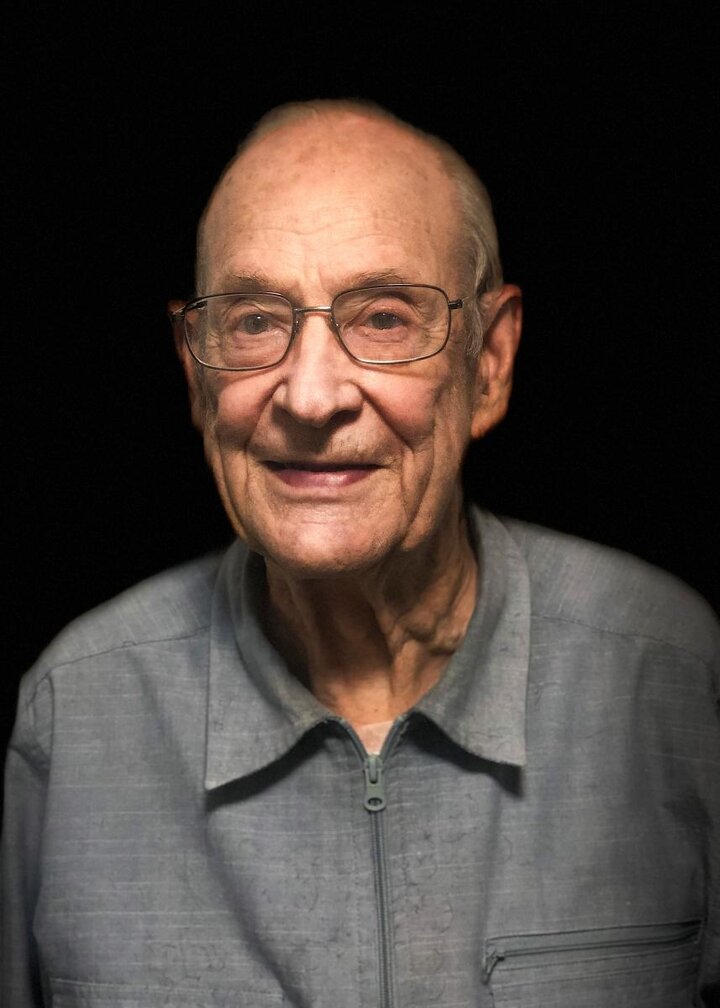
STEVE A. EBERHART
Steve A. Eberhart graduated from the University of Nebraska–Lincoln with a Bachelor of Science degree in general agriculture in 1952 and a Master of Science degree in plant breeding in 1958. He received his doctorate in genetics and statistics at North Carolina State University in 1961. In 1988, he was awarded an honorary Doctor of Science from Nebraska.
Eberhart grew up on a farm west of Bassett, Nebraska, and graduated valedictorian from Rock County High School.
He served as a 1st lieutenant in the U.S. Air Force from 1952 to 1956.
Eberhart worked as a research geneticist with the U.S. Department of Agriculture’s Agriculture Research Service in North Carolina, Iowa and Kenya from 1961 to 1975.
While in Kenya, he and co-workers developed a comprehensive breeding system, published in 1967, to develop improved maize breeding populations and parental lines. He developed corn hybrids for Eastern Africa that were used extensively for more than 20 years that had the most potential for quickly increasing yields to reduce hunger.
During this time, he received Superior Service Awards and a Certificate of Merit from the USDA. In 1970 he received the Arthur S. Flemming Award by the D.C. Junior Chamber of Commerce as one of the five outstanding young scientists in federal government.
He served as associate director and vice president for research with Funk Seeds, a CIBA-GEIGY company in Bloomington, Illinois, from 1975 to 1987. He directed and coordinated corn, sorghum, soybean and sunflower breeding programs in the United States, Argentina, Brazil, France, Italy, Spain and Thailand.
In 1987 he was named director of the National Seed Storage Laboratory, USDA-ARS in Fort Collins, Colorado, until his retirement in 2000. Officially known as the National Center for Genetic Resources Preservation, the laboratory guards thousands of seed varieties.
He was also director of the Latin America Maize Project from 1994 to 2000.
He was an active member of Crop Science Society of America, serving as president in 1990. Awards received from CSSA included Fellow in 1985, Crop Science Research Award in 1994, Frank N. Meyer Medal for Plant Genetic Resources in 1999 and the Crop Science Distinguished Career Award in 2003. Other awards Eberhart received were Fellow, American Society of Agronomy in 1975; Fellow, American Association for Advancement of Science in 1994 and the National Council of Commercial Plant Breeders’ Genetics and Plant Breeding Award in 1998.
He was associate editor for Crop Science 1971–1973 and was technical editor for Crop Registration 1999–2005.
During his career he published 82 scientific manuscripts. A paper on stability parameter models was one of the most widely cited publications in crop science and plant breeding journals. This paper established a widely used method to evaluate potential new hybrids based on responses to a range of environments as well as average yield performance.
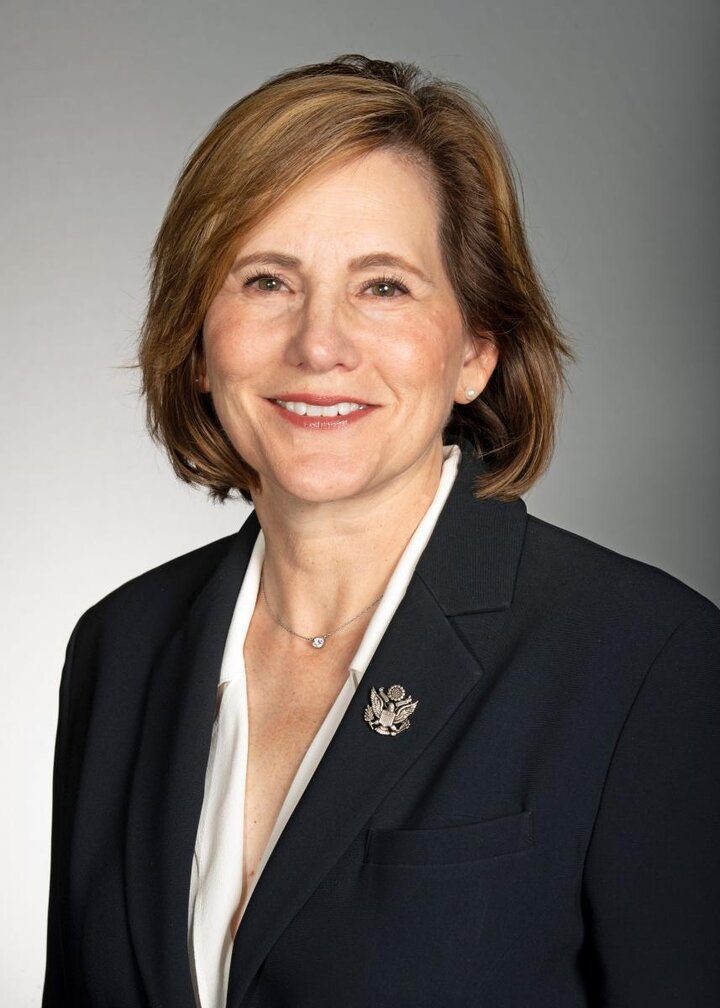
KIMBERLY ERUSHA
Kimberly Erusha is the managing director of the United States Golf Association’s agronomic and environmental division. Now living in New Jersey, Erusha oversees the association’s efforts to help golf facilities enhance better golf playing conditions.
She grew in Walford, Iowa, with her parents and six siblings and credits her parents for a love of the outdoors.
Following in the family tradition, Erusha attended Iowa State University. In 1982 she graduated with her Bachelor of Science degree in horticulture.
In 1984, Erusha went to work for Robert Shearman, now Emeritus Sunkist Fiesta Bowl Professor of Agronomy at the University of Nebraska–Lincoln. As an extension associate in the turfgrass Integrated Pest Management program, Erusha coordinated the pest surveillance program, prepared the weekly extension turfgrass IPM newsletter, conducted Nebraska Extension Master Gardener training and developed multimedia education materials.
Even though she had no intention of going back to school, Erusha couldn’t pass up Nebraska’s tuition of one dollar per credit hour for full-time employees to assist in earning her master’s degree. She earned a Master of Science degree and a Ph.D. in horticulture, specializing in turfgrass management in 1986 and 1990, respectively.
Erusha joined the United States Golf Association in 1990 at a time when golf and turf research was flourishing and major changes were happening in information dissemination. As a technical writer for the USGA, Erusha developed content to communicate the principles of turfgrass science and golf course management. She also developed educational material to benefit USGA’s environmental program, turfgrass research program and general agronomic activities. She was assistant editor of the USGA Green Section Record, a bi-monthly professional journal on golf course management topics and turfgrass science.
In 1994, Erusha became the USGA's director of education. She coordinated and managed the Green Section’s education and communication programs pertaining to the results of its turfgrass and environmental research programs, agronomic consulting and environmental education activities. She also became the Green Section Record’s associate editor.
In 2010 Erusha was promoted to managing director of USGA’s agronomic and environmental division, leading responsibilities for the USGA Course Consulting Services, education outreach and turfgrass research. The on-site consulting brings together highly skilled USGA agronomists providing on-course evaluations of individual golf facilities. They offer golf course staff and officials best management recommendations to produce the best possible turf for the investment. She also leads a global multimedia education and outreach program designed for golf course officials, superintendents, golfers, environmental organizations and regulatory officials. In addition, Erusha oversees the agronomic preparations for USGA national championships.
All of these initiatives are supported by the USGA Turfgrass and Environmental Research Program, the world’s largest turfgrass research grants program. It has distributed more than $40 million to North American universities.
Founded in 1894, the USGA celebrates, serves and advances the game of golf.
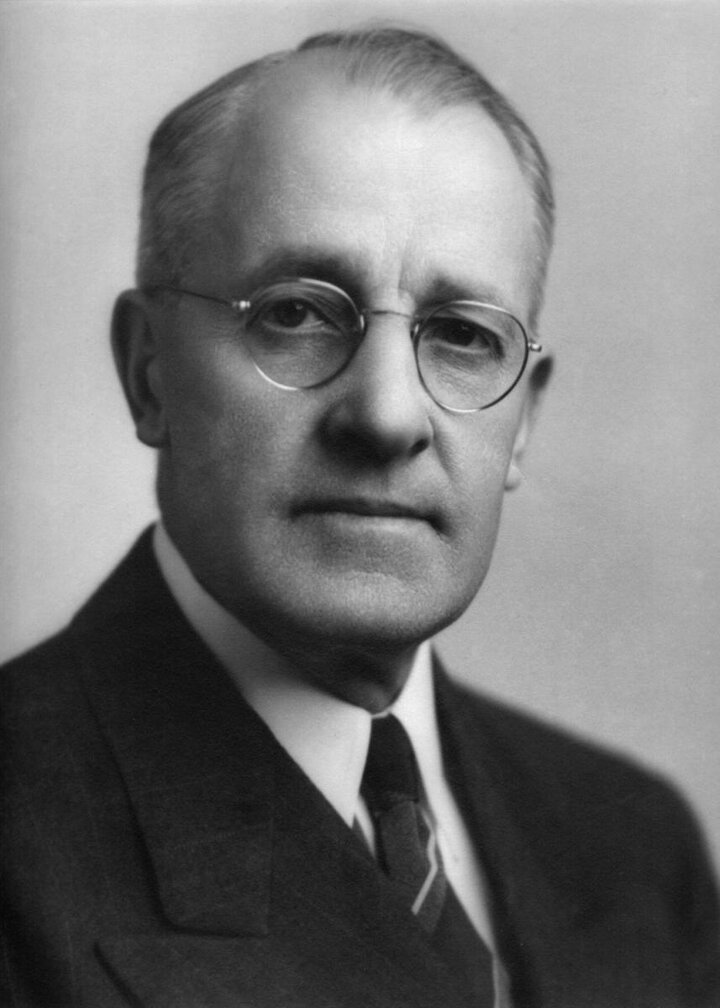
FRANKLIN D. KEIM
September 10, 1886 – March 7, 1956
Franklin D. Keim, born in Hardy, Nebraska, graduated from the University of Nebraska with a Bachelor of Science degree in agronomy in 1914 and a Master of Science degree in 1918. He then went on to earn a Ph.D. at Cornell University in 1927 studying genetics, specifically a cross between club wheat and spelt.
Keim graduated from Davenport High School and, as preparation for a teaching job, went to Bethany College in Linsborg, Kansas, in 1904. He returned to Nebraska as a teacher in Nuckolls and Thayer counties from 1905–1908. Desiring more education, he attended Peru State Teachers College, where he received a two-year teacher’s certificate. This qualified him for the position of principal of Chester High School from 1909 to 1910. He was made superintendent of schools at Blue Springs in 1910. In 1911, he decided to continue his education and enrolled at the Nebraska College of Agriculture.
Keim is recognized for his outstanding leadership in the field of agronomy both as a teacher and an administrator.
He began his teaching career at Nebraska as an assistant in agronomy from 1914 to 1916 and then as an Extension specialist for two years. In 1918 he was promoted to full professor. He retired in 1952.
Keim served as chairman of the Department of Agronomy from 1932 to 1952. Under his leadership, the department came to be respected as having one of the best agronomy programs. It was also during that period that most of our modern agricultural practices were developed.
Keim’s interests were in plant breeding and genetics, weed control and ecological studies of native grasses with reference to pasture utilization. His primary interest was in the field of genetics. He taught the Introduction to Genetics course for 30 years. He was passionate about developing students and steering them into successful careers, whether research or practice.
He acted as a mentor to several students who went on to notable careers, with George Beadle being the most recognized. Beadle received his bachelor's and master’s degrees under the tutelage of Keim and worked in Keim’s lab on wheat research. Through Keim’s influence, Beadle was able to secure a graduate assistantship at Cornell University and went on to win the Nobel Prize in 1958.
In 1937, Keim was elected Fellow of the American Society of Agronomy and served as president in 1943. He was a member of the Agronomy Journal Editorial Board from 1946 until his death in 1956. In 1931, he served on the committee to authorize a student section of the ASA to be composed of students in farm crops, soils and related fields.
Keim was a member of the Nebraska Academy of Science, the American Association for the Advancement of Sciences, the Genetics Society of America, Sigma Xi, Gamma Sigma Delta, Alpha Zeta, The Nebraska Agronomy Club, Farm House Fraternity and the Innocents Society at the University of Nebraska. In 1950 he received a plaque from the Nebraska Crop Improvement Association, and in 1955 he received one from the Nebraska Society of Farm Managers and Rural Appraisers for his service.
The Agronomy Building was renamed Keim Hall in his honor in 1957. An inscription on a plaque placed in the main entrance to Keim Hall describes the gift he left to his generation. It says “He taught and inspired many in the science of agronomy and in the principles of living.”
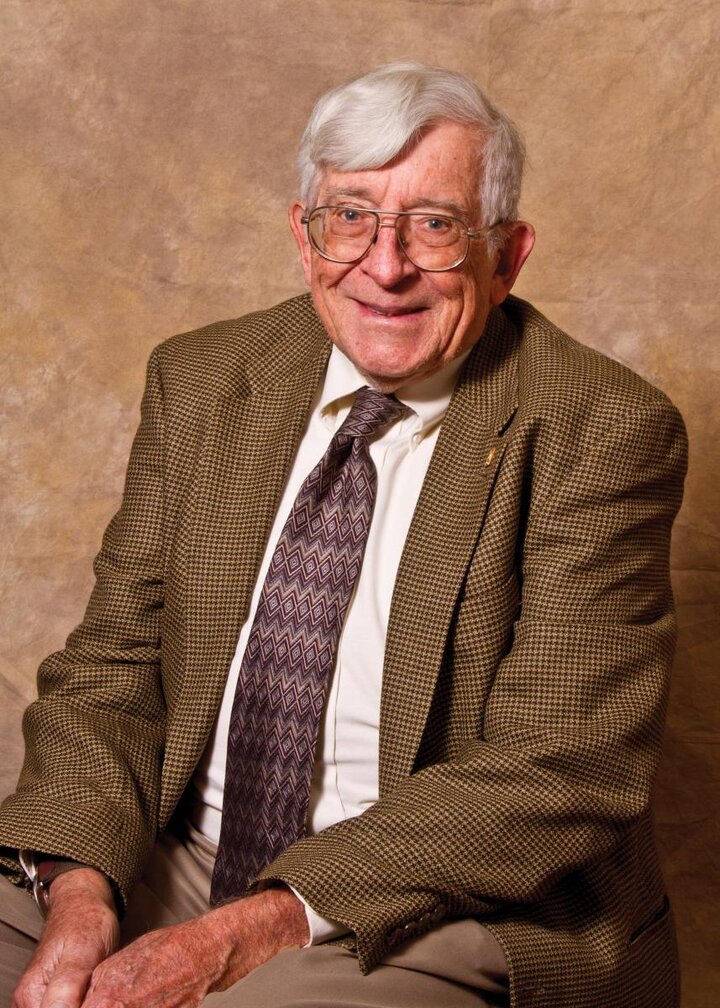
A. BRUCE MAUNDER
May 13, 1934 – August 5, 2019
Bruce Maunder was a worldwide leader in sorghum breeding and genetics and focused his career on improving global food security.
Born in Holdrege, Nebraska, Maunder grew up in Lincoln and spent summers near Grand Island on his maternal grandfather’s irrigated farm. He graduated from both the American Overseas School of Rome, Italy, as well as Lincoln Northeast High School in 1952.
Maunder graduated from the University of Nebraska– Lincoln with a Bachelor of Science degree in agriculture in 1956. He then attended Purdue University to complete his Master of Science and Ph.D. in plant breeding in 1958 and 1960, respectively. He was awarded honorary doctoral degrees in science and agriculture from Nebraska in 1991 and from Purdue University in 2003.
In 1961, Maunder began his 37-year career at Dekalb Genetics Inc. as director of sorghum research and eventually senior vice president for research in Lubbock, Texas.
Through his experience overseas as a high school senior and his job responsibilities at DeKalb, Maunder developed a strong interest in international agriculture and food security. His plant breeding achievements resulted in worldwide sorghum improvement with around 150 commercial sorghum grain and forage hybrids grown on as many as 10 million acres in more than 20 countries. His efforts were key to increasing agricultural production worldwide during a period when the world’s population more than doubled.
He served as president of the Crop Science Society of America, was on the board of Diversity magazine, served on the Sorghum Crop Germplasm Committee for the U.S. Department of Agriculture and was chair to the Iowa State University Seed Science Center advisory council.
Maunder received numerous recognitions for his work including CSSA Fellow, American Society of Agronomy Fellow, Henry Beachell Distinguished Alumni Award, Monsanto Distinguished Career Award, American Seed Trade Distinguished Service Award, Australian Award for Worldwide Sorghum Improvement, Agronomic Industry Award, Genetics and Plant Breeding Award for Industry and NCCPB Genetics and Plant Breeding Award for Industry.
He volunteered as a research adviser with the National Sorghum Producers and as a manager and board member of the National Sorghum Foundation. He was also active on the U.S. Agency for International Development International Sorghum and Millet program as chair of the external evaluation panel. He also served as an adjunct professor at Texas Tech University.
Maunder was an active member of the World Food Prize family with Dr. Norman Borlaug. Borlaug, the 1970 Nobel Peace Prize recipient, created the World Food Prize, which recognizes individuals who make contributions to the world supply of food by improving quality, quantity or availability, and the Global Youth Institute, which is designed to nurture and develop the next generation of scientists.
Nebraska’s College of Agricultural Sciences and Natural Resources awards a Maunder Borlaug Scholarship each year in honor of Bruce and Kathy Maunder and their passion and commitment to education with a global perspective.
The National Sorghum Producers and the National Sorghum Foundation also established the Bruce Maunder Sorghum Leadership Scholarship in appreciation for his exceptional service, dedication and loyalty to the sorghum industry.

MONICA NORBY
Monica Norby, University of Nebraska–Lincoln Assistant Vice Chancellor for Research, is responsible for developing strategic research initiatives and for the oversight of federal relations, research communications and international research collaborations.
Norby received her Bachelor of Science in horticulture in 1977 and a Master of Science in plant breeding and genetics in 1982, both from Nebraska.
The natural world — especially plants and landscapes — and science writing have remained the two driving interests that shaped Norby’s education and career choices.
She spent her early childhood living on the edge of Omaha next to areas of pasture, woods and a creek and developed a love of the outdoors. Always an avid reader, Norby had plans to become a writer by the time she attended junior high school in Lincoln. High school years brought the environmental movement and the first Earth Day, which she passionately promoted throughout high school in Lincoln. Norby’s interest in horticulture began in her senior year working in the greenhouses at Campbell’s Nurseries.
As a college freshman, Norby majored in horticulture and forestry with the intent to study forestry. Many required courses were in agronomy, where she was introduced to plant breeding by the late genetics professor Dave McGill and the late Dermot Coyne, George Holmes University professor of agronomy and horticulture. But her commitment to plant breeding came while taking a course taught by the late John Schmidt. The agronomy professor caught Norby’s imagination when he claimed that the first plant breeders were women gathering seeds and saving the best for the next crop.
After completing her bachelor’s degree, Norby became a research technician for Terry Riordan, Nebraska emeritus professor for the then new turfgrass breeding program. Beginning in 1978 she worked for Schmidt and the late agronomy professor Virgil Johnson, who led the internationally recognized Nebraska wheat research program for the next decade. She completed her master’s degree in plant breeding and genetics and went on to pursue doctoral studies with Schmidt.
In 1986 Norby changed career paths and founded Norby Consulting, combining her scientific background with her writing skills and specializing in science writing and proposal development. She wrote research stories for the Institute of Agriculture and Natural Sciences publication Research Nebraska and the Statewide Arboretum’s The Seed and the Spring Affair News and ventured into grant proposals.
In 1998, she partnered with Nebraska’s Roger Bruning, Velma Warren Hodder professor of educational psychology, on his book "Cognitive Psychology and Instruction," now in its fifth edition.
Norby returned to the university in 1998 as a proposal writer. She worked with the late Prem Paul, former vice chancellor for research, and Mike Zeleny, now chief of staff and associate to the chancellor, to build the university into a research powerhouse. Norby established the Office of Proposal Development, which helps investigators develop grant proposals and secure funding for their research, and the Office of Research Communications, that produces print, web and social media communicating Nebraska research to internal and external audiences.
Norby has played a key role in establishing and securing funding for major projects, centers and institutes at the university. Key projects include the Nebraska Center for Virology, the Extreme Light Laboratory, NEBRASKA MATH, Johnny Carson Center for Emerging Media Arts, Nebraska Center for Energy Sciences Research and the Robert B. Daugherty Water for Food Global Institute. From 2012 to 2013, she was associate director of DWFI and developed staff, programmatic areas and strategic and marketing plans for the institute.
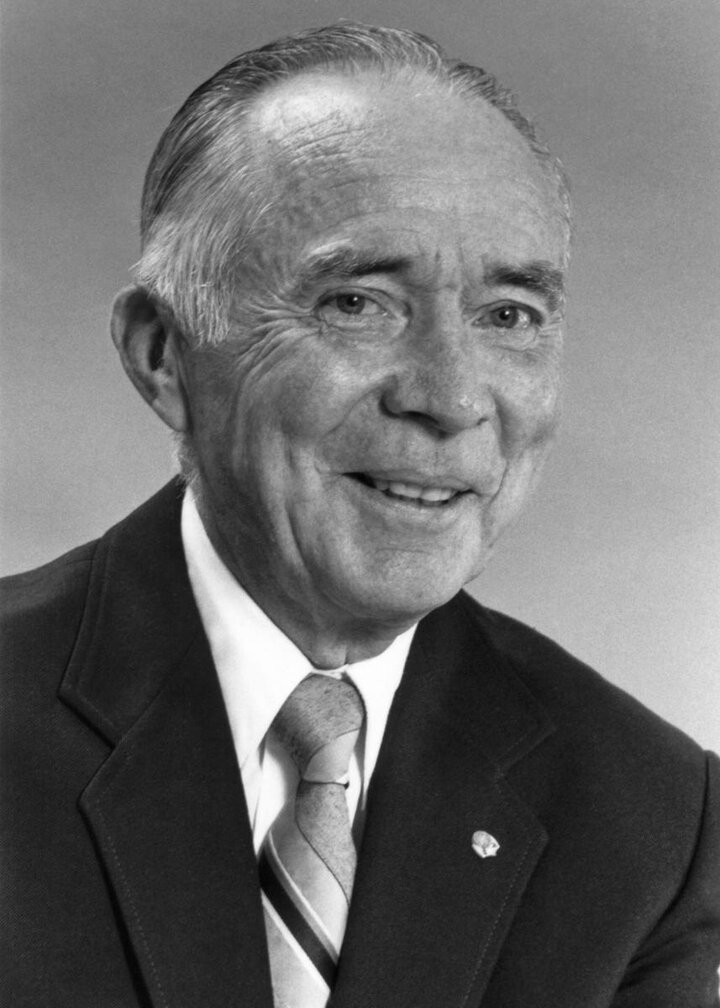
ROBERT A. OLSON
April 14, 1917 – July 18, 1987
Robert A. Olson, soil scientist and professor of agronomy at the University of Nebraska–Lincoln from 1948 to 1986, became Nebraska’s first full-time extension agronomist specializing in soils, initiating extensive fertilizer and soil testing operations.
Olson and colleagues proved that excessive nitrogen fertilizer could actually hurt crop yield and warned that improper use of fertilizer eventually would pollute ground water. Their work had major implications in the efficient use of fertilizer nitrogen, the environmental impact of nutrient use in agriculture, the upgrading of soil testing as an economic and environmental monitor and the interaction of tillage method and fertilizer use efficiency. They provided farmers greater consistency and integrity to soil testing recommendations.
Born in Fullerton, Nebraska, Olson attended elementary and high school in Genoa. He received an A.B. degree in chemistry and soils from Nebraska in 1938.
During World War II, Olson served as a lieutenant air navigator in the U.S. Navy from 1943 to 1946. After the war, he returned to Nebraska and obtained a Master of Science degree in soils. He was appointed to the agronomy faculty at Nebraska in 1948 and promoted to professor of soils in 1957.
Olson also served as a consultant to numerous U.S. and European agricultural agencies. His experience with radioisotopes in agronomic research led to appointments to the Organization for European Economic Cooperation in Paris in 1958 and to the International Atomic Energy Agency Soil Section in Vienna in 1962.
From 1967 to 1969, Olson served as a project manager for the Food for Hunger Campaign Fertilizer Program for the Food and Agriculture Organization in Rome. He served as acting director of the Agricultural Division of the IAEA/FAO in Vienna, Austria, in 1974 to 75.
Through his work with FAO, IAEA and the USDA, a manual was developed for effective fertilizer use for grain crops, integrating soil classification into soil-fertility programs with both national and international scope.
In the aftermath of the 1986 Chernobyl nuclear disaster, Olson served as an international consultant evaluating agricultural consequences and mitigation.
Along with his many other professional activities, Olson taught undergraduate and graduate courses in soils, fertilizers and soils-related radioisotope techniques. In the latter course, he emphasized hands- on analysis of soil, plants and plant-soil interactions.
Olson authored over 100 publications, wrote 22 book chapters and edited two technical books. He was associate editor of Soil Science Society of America Journal and soils editor of Agronomy Journal.
Top awards from national soil and agronomy societies testify to the quality of Olson’s research and teaching. He was elected as a Fellow of the Soil Science Society of America and of the American Society of Agronomy. Additionally, he received the ASA International Service in Agronomy Award, the Carl Sprengel Agronomic Research Award, the Agronomic Achievement Award-Soils, the ASA Crop and Soils Magazine Journalism Award, the Soil Science Distinguished Career Award, the SSSA Bouyoucos Soil Science Distinguished Career Award and the SSSA International Soil Science Award.
At Nebraska, he received the UNL Distinguished Teaching Award, the Gamma Sigma Delta Award of Merit and Teaching Award of Merit, and the Sigma Xi Outstanding Scientist Award.